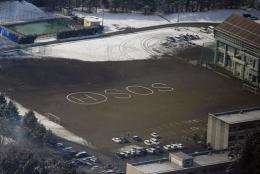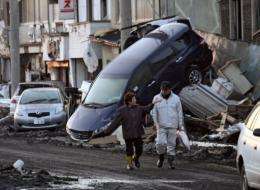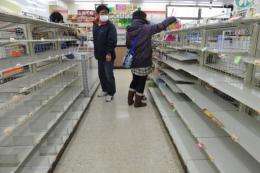People turn ever more to web in times of crisis

The earthquake off the coast of Japan and the resulting tsunami has proven, yet again, how the Internet offers an information lifeline to the world in a time of crisis.
The Internet was designed so that US military communications could withstand a nuclear war, but is proving equally resilient in the face of natural disasters and even seismic shifts in global politics.
As the waves smashed into the Japanese coastline following the 8.9-magnitude earthquake 130 kilometres (80 miles) east in the Pacific ocean on Friday, a tsunami of images was also soon hitting the web.
In scenes worthy of any Hollywood disaster movie, a massive wave was shown rolling in from the sea, and one of the most watched and shared videos was of water slowly engulfing the city of Sendai's airport.
Small aircraft, cars and trucks were shown scattered amongst the shattered debris of buildings like an unruly child's toy box.
And what looked like prefabricated factory units were shown floating under a bridge as drivers spun their cars and trucks around to try to outrun the waves.
Nearly five million people tuned in to video sharing site YouTube on Saturday to watch one raw, unedited video of the wave chewing away at Japan's coastline. Several other videos had notched up between three and four million hits.

Hundreds of people commented on the videos across the web and shared information, from social network giant Facebook to micro-blogging site Twitter -- as well as local, Japanese language websites.
And the Internet also functioned as a virtual crisis centre as sites such as Google's people finder service helped locate loved ones and offered help and support to survivors.
As the floodwaters subsided, worried friends and relatives leapt onto their computers to find information about people who had not been heard from since the mighty wave crashed ashore.
Google's person finder service had notched up more than 81,000 records of people leaving messages seeking information on friends and family by 0300 GMT Sunday.
The site was updating, in English and Japanese, by the hundreds every few minutes.

A random search of the common Japanese surname "Sato" brought up hundreds of results, many of them for people living in Sendai -- the city that faced the brunt of the thunderous body of rolling water.
Gunduzhan posted a message seeking Aki Sato, a dentist from Sendai who studied at Ohu University in Koriyama. A photo of the pretty young woman was also posted on the site.
"Looking for Aki Sato," the post read. "Last heard from after earthquake but before tsunami."
Another post seeking Fatima Sato had some good news -- "Mom is ok. She is on her way home."
The international and Japanese Red Cross also set up a similar site.
And micro-blogging site Twitter was updating every second with messages of good will, of condolences and offering aid.
A service was being shared on Twitter allowing people the chance to donate to the Red Cross via text message, the donation being added to phone bills.
Some tweets were posted by international celebrities such as the American singer Lady Gaga, who launched a bracelet to support the relief effort.
She asked her legion of fans -- whom she calls "Little Monsters" -- to buy a bracelet on her website saying, "We Pray for Japan," for donations of $5 or more. All proceeds will go to relief efforts, she said.
Useful links:
The English version of the Red Cross website was being set up at www.icrc.org/eng/familylinks-japan
The English version of the Google friend finder service can be found here: japan.person-finder.appspot.com/?lang=en
Facebook's Japan tsunami page can be found here: www.facebook.com/#!/japan.tsunami.2011
YouTube videos: www.youtube.com/watch?v=k4w27IczOTk&feature=
www.youtube.com/watch?v=-DSSssHxm4Y&feature=
www.youtube.com/watch?v=dm2Hr-1l1MM&feature=
youtube.com/watch?v=80CH_XkpSCE&feature=" target="_blank">www.youtube.com/watch?v=80CH_XkpSCE&feature=
(c) 2011 AFP





















